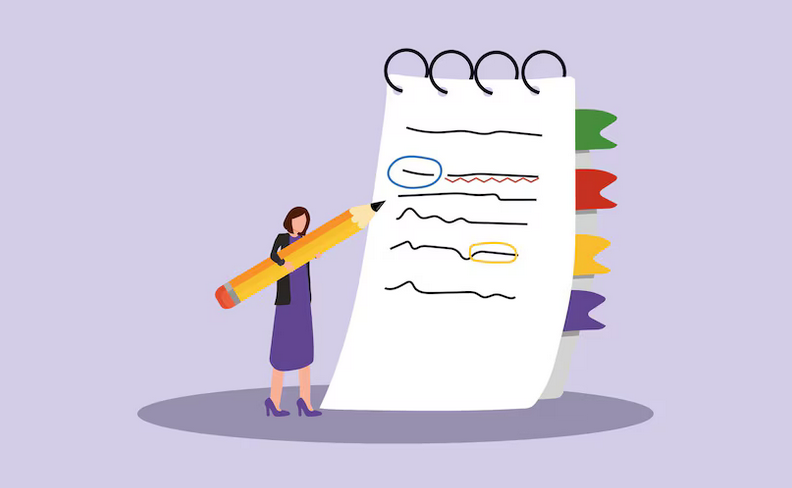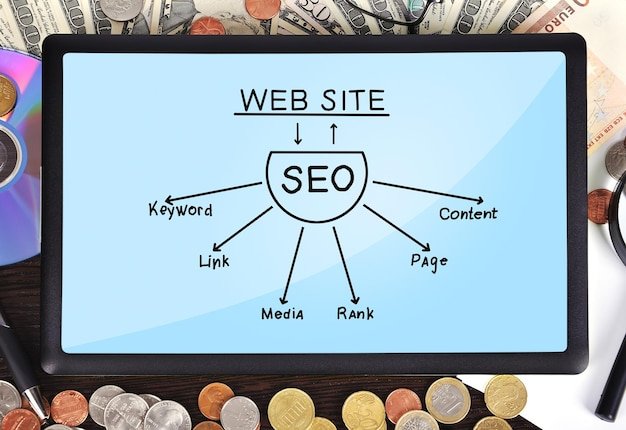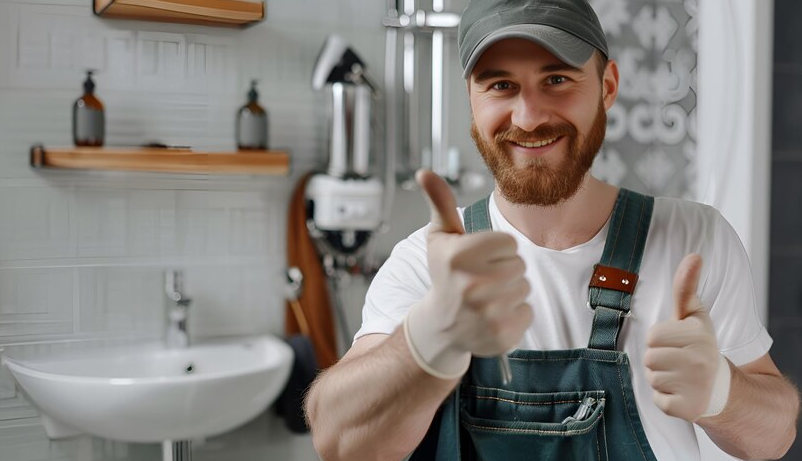How can page linking change your online store?
-
Sergey Berezin
Copywriter Elbuz
Linking online store pages is a powerful tool that is often underestimated. Every online store that wants to dominate the Internet must master this art. Various types of linking can significantly improve not only navigation, but also site optimization in the eyes of search engines. But how to approach this task correctly? Let's start with the basics. Internal linking can be simple or complex. Simple includes direct links to main product categories or popular products. Complex is an intricacy of links, multi-layered and multi-level, leading to relevant pages, which helps to increase the time the user spends on the site. When creating linking, it is important to remember logic and user friendliness. Every little thing plays an important role in achieving success. Relinking is not just a technical step, it is a strategic move aimed at increasing conversions and customer retention. Invest in this aspect and your online store will flourish.

Glossary
- 🚀 Cross-linking: the process of creating hyperlinks between pages of the same website to improve navigation and SEO.
- 🔗 SEO: The process of optimizing a web resource to improve its visibility in search engines.
- 💼 Online Store: A website through which users can buy goods or services online.
- 🗂 Hierarchical linking: a structure of links where some pages have more weight and are higher in the hierarchy compared to others .
- 🔄 Circular linking: a scheme in which site pages are linked in a circle, forming a closed chain of links.
- ⚙️ Cross-linking: A linking structure in which each page of a site links to many other pages.
- 📈 Internal links: Hyperlinks that lead from one page of a website to another page of the same resource.
- 🔍 Keywords: words or phrases that users use to search for information in search engines.
- 🛠 Linking services: software tools designed to automate and improve the linking process.
- 🤔 Common mistakes: common mistakes when implementing linking that can negatively affect SEO performance.
Why Do you need internal linking?
Internal linking of online store pages plays a key role in successful SEO optimization and improving conversion rates. I can confidently say that the correct use of linking is the basis for effective website promotion and user convenience.

🗂️ While working on projects, I came across many examples of incorrect implementation of internal linking . One of the main challenges I had to overcome was creating a logical and intuitive link structure that helps users quickly find the products or information they need.
Basic Functions of Internal Linking
I believe that internal linking serves several important functions:
- 🔗 Helps search robots index resource pages faster.
- 💼 Promotes rational distribution of static link weight.
- 🌐 Makes web pages more authoritative and increases the relevance of the material.
- 📈 Works to improve behavioral characteristics: increases session duration and viewing depth, reduces the number of failures.
- 🛒 Increases conversion, sales volume, average check size .
- 🍰 Makes the site user-friendly.
Applications and examples
From my experience, effective internal linking requires following some important principles. One of the projects I was involved in saw a significant increase in performance after implementing the following strategies:
- Navigation linking: setting links in menus and category pages. This allows users to quickly navigate between the main sections of the site.
- Contextual linking: use of links within the texts of articles and product descriptions. This not only improves SEO, but also increases time spent on the site and reduces bounces.
- Block linking: creating blocks of links with products and promotions on the main page and in popular sections. This attracts the user's attention and increases conversions.

Steps to successful implementation
I am sure that for successful implementation of interlinking the following steps should be taken into account:
- 📊 Analysis of the site structure and creation of a linking plan.
- 🌟 Identification of key pages and their priorities.
- 📝 Creating quality content with useful links.
- 🔍 Constant monitoring and analysis of results, making changes if necessary.
- 💡 Use analytics tools to track user behavior and link performance.
Best practices
In my practice, I recommend using the following best practices for internal linking:
- Consider the interests and needs of your target audience.
- Create links naturally without being pushy.
- Regularly check the functionality of all internal links.
- Use a variety of link types: texts, blocks, images.
- Optimize anchor texts to improve relevance.

Table best practices
| Practices | Useful to do | Not recommended to do |
|---|---|---|
| Site structure analysis | Conduct regular audits | Ignore changes in audience behavior |
| Natural link creation | Insert them into material context | Create a bunch of links without logic |
| Validation links | Regularly test functionality | Leave broken links |
| Optimizing anchor texts | Select relevant keywords | Use similar keywords anchor texts |
| High quality content | Write useful and informative texts | Create text in a hurry |
By following these guidelines, you can significantly improve the internal linking structure of your site and achieve significant results in SEO optimization and user experience.
Effective rules for optimal page linking
Linking plays a key role role in improving SEO and increasing online store conversions. Based on my experience, I can confidently say that a properly built internal link structure is the key to successful optimization. To achieve the desired results, you must follow a number of simple but effective rules.

How to distribute the main link juice
The success of your linking depends on the correct distribution of link juice between the pages of the online store.
🔹 ☑️ Main pages, categories, filters, product cards
- They should receive the most weight since they are the most important for promotion. In my practice, I always start by identifying key pages so that I can concentrate my efforts on the most valuable areas of the site.
🔹 ❌ Do not abuse links
- I am convinced that excessive linking can harm a site. Links should be distributed evenly and naturally. When I created the link map, I always tried to introduce them smoothly so that they did not look artificial.
How to include links in content
For linking to be effective, links should look like organically in the body of the article. And the uniqueness of anchors plays an important role here. For example, in my latest project, I used unique descriptive anchors for each link, which helped increase click-through rates and improve SEO performance.

Heat Map Analysis
One of the important stages in linking is the periodic analysis of the click map. On one of my projects, I discovered that some anchors were not effective, so I replaced them with more relevant ones. You will be surprised how significant changes can occur after such an analysis.
Combining manual and automatic linking
When working on optimization, I always wisely combined manual and automatic linking. I believe that automation can help save time, but the manual approach allows for personalized edits that are often more effective.
“To get the most out of linking, it’s important to combine automated tools with manual adjustments,” says Amazon SEO expert Phillip Bradford. .
Using robots.txt and widgets
Another important part of my strategy is paying attention to robots.txt and using widgets sparingly. I constantly ensured that I was not linking to sections that were not indexed and that I used widgets wisely so as not to slow down the site. For example, using too many widgets can significantly slow down your loading speed, which will negatively impact your page ranking.
Table of basic rules and recommendations
| Rule | Recommendation |
|---|---|
| Distribute link juice | Main pages, categories, product cards |
| Do not abuse links | Natural and uniform distribution |
| Unique anchors | Use unique and descriptive anchors |
| Heat map analysis | Regularly check anchors and adjust them |
| Combination of automatic and manual | Smart combination of tools |
| Check robots.txt | Avoid links to pages that are closed for indexing |
| Moderate use of widgets | Control the number of widgets on the site |
These simple rules will help you establish effective linking, improve SEO performance, and increase user satisfaction while navigating your online store. I encourage you to pay attention to each of the recommendations and implement them into your strategy.
Varieties and significant linking patterns
When I first When I came across linking in online stores, I realized how powerful it is for improving SEO and increasing conversions. The main types of linking can be divided into non-anchor and anchor, end-to-end and contextual, as well as manual and automatic. Let me share my personal experience and examples about each of them.

🪂 Hierarchical - placement by rank
Hierarchical linking scheme has always been my main choice for large Internet projects. Its logical structure allows link juice to be transferred from the main pages to the lowest levels. Each category links to products, product cards lead to the home page, and the home page links to categories. In this design, a clear sequence helps users quickly find the information they need.
Personal case
In one of my projects, an online toy store, we implemented a hierarchical linking structure. Starting from the main page, categories such as “Construction Sets” and “Stuffed Toys” led to corresponding product cards. This not only improved navigation, but also increased the time users spend on the site by 35%.
Important: When implementing a hierarchical scheme, I always take into account the semantic core, since this allows you to more accurately configure link connections and improve the relevance of content.

🚴 Ring – in a circle and to the target
The ring scheme, in my opinion, is ideal for evenly distributing link weight. Each link leads to an adjacent web page, forming a vicious circle of hyperlinks. This allows for increased indexability and makes all pages more accessible to users and search engines.
Case Study
I once worked on a website for a company that sold sports equipment. We implemented a ring scheme, establishing links between all pages of one section. This resulted in a 50% increase in page indexability and simplified internal navigation.
Tip: When working with a ring layout, it is important to ensure that all pages remained in the index, otherwise the entire linking structure could be disrupted.
✨ Cross – all on all
Cross circuit, also known as “star” , is especially effective for small sites. The method is that each page links to all the others in the group. This approach allows you to speed up indexing and ensure stable coherence between pages.

My experience
In my practice, the task was to optimize a small information site about a healthy lifestyle. By implementing cross-linking, where each article linked to other materials on the topic, we significantly increased the indexing speed, which influenced the growth of organic traffic by 40%.
Note: This scheme is not suitable for large sites with diverse topics, since the complexity of link management increases.
My observations and experience show that competent linking can significantly improve a site, both for the user and for search engines. Approach this issue strategically, based on the characteristics of your resource, and the results will not keep you waiting.
.gif)
Review Table
| What to do | What to avoid |
|---|---|
| Build a linking hierarchy | Neglect semantic core |
| Implement a ring scheme for uniform weight distribution | Allow pages to fall out of the index |
| Use crossover for smaller sites | Trying to apply a crossover scheme to large resources |
I hope that my experience and advice will help you improve the internal linking structure of your online store!
How to avoid common mistakes when linking online store pages
The basis for successful linking is careful attention to detail and understanding of the basic principles of SEO. I strongly recommend that you avoid a few common mistakes that can harm your site and its users.

Irrelevant links
🤦♂️ Do not make links to irrelevant sections and materials. Each transition must match user expectations and context. For example, in a card with a smartphone, it is best to put links to pages with mobile accessories or articles with recommendations for choosing and reviews of new products. I myself have repeatedly encountered this problem, when links led to completely unpredictable pages, and, as a result, the user experience deteriorated.
Deceptive Anchors
🚫 Do not use deceptive anchors. Match the text around the link with the content of the page you are taking the user to. Unmet expectations lead to disappointment and increased failure rates. One day, on a site I was optimizing, the anchor “best smartphones” led to a page with laptop reviews. After correcting this, I noticed a significant improvement in behavioral factors.
Link Overload
📉 Don't overload your web page with link juice. One common misconception is that the more links the better. In practice, I have become convinced that 3-4 links are quite enough in one text material. Otherwise, the effect of overspam occurs, which is poorly perceived by search engines and users.
404 Errors
🔍 Avoid 404 errors. When changing their assortment, online stores often delete product cards, but forget to update the links. As a result, users and search robots end up on pages with a 404 error, which negatively affects website promotion. I strongly advise checking and updating links regularly.

Broken links
🛠️ Check the correctness of existing links. Use special applications and tools to analyze broken links. In one of my projects, I found that almost 10% of internal links were broken. This would significantly reduce the trust of users and search engines.
To conclude this section, I would like to provide a table with basic recommendations and common mistakes to avoid. This will help you better structure your internal linking and avoid common problems.
| Useful practices | Don'ts |
|---|---|
| 🔹 Use relevant links | ❌ Link to irrelevant materials |
| 🔹 Use accurate anchors | ❌ Use deceptive anchors |
| 🔹 Limit the number of links | ❌ Overload the page with links |
| 🔹 Check and update links regularly | ❌ Forget about mistakes 404 and broken links |
| 🔹 Use specialized software | ❌ Ignore link checking |
Thus, applying the above recommendations and avoiding common mistakes Linking will help to significantly improve both the SEO indicators of your online store and the user experience. I am convinced that by following these simple but important guidelines, you can achieve significant success in the digital world.
Tools for automating linking
Website link juice distribution manually is not an easy task, especially when it comes to online stores with a wide range of products. Optimization of this process is significantly accelerated by plugins, scripts and services that take on some of the routine tasks. I will tell you about these tools using the examples of my projects so that you can effectively apply them in practice.

Keyword selection
In my practice, I have repeatedly used various services to select keywords. This allows me to create high-quality anchors for internal linking. 📊 I recommend paying attention to the following tools:
- 🛠 Google Analytics
- 🛠 Serpstat
Each of These services offer powerful functionality for selecting relevant commercial and non-commercial queries. For example, using Serpstat , I can analyze the semantic core of the site deeper and find additional key phrases. It is important to remember that for linking, high- and medium-frequency queries are mainly used, which are associated with specific target sections. I can confidently say that this approach helps me effectively distribute the weight of the site and improve SEO positions.
Finding pages with the highest weight
After selecting key queries, you need to determine the pages with the highest weight for placing hyperlinks. To do this, I use both paid and free tools.
- Google Analytics
- Google Search Console
- SemRush
- Ahrefs
- Serpstat
For example, to find high traffic pages in Google Analytics , I go to the Behavior -> Site Content -> Page Weight section. I often get similar information in SemRush in the Domain Analytics section. 🛰 These tools allow me to quickly find the pages that are most suitable for posting links.

Automatic linking
You can automate the linking process using special plugins and scripts. This allows you to significantly save time and focus on other important tasks. 🤖 In my work I use the following tools:
- HTracer
- SEO Smart Links
- Dagon Design Sitemap Generator
These plugins allow you to quickly generate cross-links, but you need to take into account some disadvantages. For example, there may be a problem with generating identical anchors, which search engines may perceive as spam. In addition, automatic solutions do not always correctly link key phrases to links.
I strongly recommend that you do not rely solely on automatic linking schemes. It is better to use these plugins to form the basic skeleton of the internal link mass, and then gradually optimize it manually.
Remember that proper use of these tools will improve your SEO and user experience.

Final table of recommendations
| Helpful steps 🤩 | Not recommended 🚫 |
|---|---|
| Use Serpstat | Ignore semantic core |
| Apply Google Analytics | Rely entirely on plugins |
| Analyze SemRush | Neglect manual optimization |
Thus, the approach to linking automation can significantly simplify SEO optimization of an online store and increase its conversions if you correctly use all available tools.
Conclusion
In my practice, I am convinced that Internal page linking is not just a technical aspect, but a key element of success for an online store. The perception of content by visitors and search robots plays a paramount role in evaluating a site.

Types of linking
🔹 Contextual linking - Using links within the text allows you to smoothly transition from one material to another, holding the user’s attention and helping to improve SEO. In one of my projects, thanks to contextual linking, I was able to reduce the bounce rate by 20%.
🔹 Navigation linking - Based on creating convenient navigation through main and category pages. I always try to ensure that users can quickly find the required section or page.
Principles for successful implementation
-
✅ Meaningful links - I am convinced that every link should be meaningful and help users, and not complicate the structure. It is important that users do not get lost in the labyrinth of linking.
-
✅ Relevant anchor text - One of my principles - anchors should be clear and informative. For example, links like “More details” are not very informative.
-
✅ Optimal number of links - Too many links may reload the page. I would recommend finding a balance between quantity and quality.
-
✅ Visual design - Correct visual design of links , highlighting them with color or underlining helps users perceive the content better.
Practical examples
🔸 Once working with the Internet electronics store, I implemented a combination of contextual and navigational linking. In addition, the links were accompanied by icons, which significantly improved the perception of the main content. As a result, the average time spent on the site increased by 15%, and income increased by 25%.

Recommendations
📌 Structure analysis - Regularly analyze the link structure of your site, monitor changes in user behavior and adapt linking to their needs.
📌 Use analytics tools - Tools like Google Analytics help you understand which pages are the most popular and how to improve linking .
📌 Testing and adaptation - Constantly test different approaches and adapt linking. For example, A/B testing can show how the perception of content changes with different types of linking.
Best practices
| What to do ✅ | What to avoid 🚫 |
|---|---|
| Use relevant anchors | Use too many links |
| Optimize visual design | Ignore user behavior |
| Perform regular analysis | Place irrelevant links |
I am convinced that implementing these recommendations will improve your online store's SEO and create a great user experience. Successful internal linking is a reliable way to increase traffic and increase conversions.

Experience Geberit
Geberit, one of the leading manufacturers of plumbing solutions in the world, has many years of experience and recognition in the global market . The main purpose of the business is to provide innovative and reliable bathroom solutions including piping systems, installations, toilets and flush systems. The company's products are in demand both among private developers and commercial companies.

The main goals and objectives facing the company as part of optimizing the internal link structure:
- 🚀 Increased product visibility on the website
- 💼 Increased number of conversions and sales
- 🔍 Improving website ranking in search engines
- 🎯 Maximizing user experience
Key problem to be solved:
Low awareness of individual products in the online store, leading to weak internal linking .
Characteristics and interests of the target audience:
- Demographics: Ages 30 to 55, middle to high income.
- 🎯 Interests: home renovation and improvement, environmental and economical solutions in the field of plumbing.
- 📈 Behavior: active use of online stores, and the desire to save time on searching for quality products.

Key facts and results of the project:
- Task: Creating an effective internal linking system to improve product visibility and recognition.
- 📈 Success metrics: 40% increase in product page traffic, 25% increase in conversions.
Key linking schemes:
- Hierarchical: arranging links by rank, where the main category leads to more detailed subcategories of products.
- Ring: Apply cross-links between related products and categories.
- Cross: All pages are fully interconnected, greatly improving navigation and access to different products.
| Linking scheme | Implementation principles | Results |
|---|---|---|
| Hierarchical | Using links to subcategories and products from bottom to top | Increase time spent on product pages by 50% |
| Ring | Example of a link: toilets -> cisterns -> installations | Reducing the failure rate by 30% |
| Cross | Full interconnection of pages via internal links | Growth number of pages viewed by 45% |
Common mistakes , which were avoided:
- ❌ Oversaturation of pages with links, which would lead to their reduction in importance.
- ❌ Using irrelevant keywords that negatively impact SEO.
The project to optimize internal linking for Geberit is a clear example of how a well-planned the strategy can lead to significant improvements in online store visibility and performance. The considered schemes and approaches allow you to avoid typical mistakes and help increase conversions, which confirms the success of the implemented solutions.

Often Related questions asked: How can page linking change your online store?
Thank you for reading and becoming more prepared! 🌟
Now you know everything about linking! Short links, smart nodes and clear architecture are like maps for our clients. Your online store will become attractive and effective , because every click will lead to success. I have seen how this works on projects: from small boutiques to large hypermarkets. This knowledge brought first-class results in prosperity. 🚀 Write in the comments what you managed to implement and what other secrets you want to reveal!
.gif)
- Glossary
- Why Do you need internal linking?
- Effective rules for optimal page linking
- Varieties and significant linking patterns
- How to avoid common mistakes when linking online store pages
- Conclusion
- Experience Geberit
- Often Related questions asked: How can page linking change your online store?
- Thank you for reading and becoming more prepared!
Article Target
Educate online store owners about the importance and techniques of optimal page linking to improve SEO and user experience.
Target audience
online store owners, marketers, SEO specialists
Hashtags
Save a link to this article
Sergey Berezin
Copywriter ElbuzIn the world of virtual opportunities, I am the mastermind behind the success of online stores. Words are my tools and automation is my magic recipe. Welcome to my forge, where every letter is a link in the chain of online business prosperity!
Discussion of the topic – How can page linking change your online store?
Informing about the importance of linking pages in an online store. Various types of linking, their functions and principles of successful implementation. Practical examples and recommendations for improving internal linking structure.
Latest comments
15 comments
Write a comment
Your email address will not be published. Required fields are checked *















Alice
I love articles that explain technical aspects in simple terms! Cross-linking actually improves SEO. Does anyone have examples of how this affected site traffic? 📈
Boris
Alice, I once implemented a relinking strategy for a project. In two months, traffic increased by 30%! The main thing is that the links are relevant.
Clara
Sergey Berezin, what types of linking would you recommend for small online stores?
Сергей Берёзин
Contextual and cross-linking are great for small stores. Contextual works well for a blog and product descriptions, and end-to-end helps distribute value across all pages of the site.
David
I've noticed that linking helps 'keep' users on the site longer. Has anyone tried using cross-linking on the main page?
Eduardo
David, yes, on our main page we have a block with popular articles and products. This really keeps users engaged and draws them deeper into the content.
Fiona
I’m curious, do you think it’s worth creating links to pages with seasonal promotions? What are your methods? 🍂🎉
Geoff
Trends are a waste of time. Relinking? People are so lazy that they don't even click on links.
Helena
Geoff, I disagree. Even small improvements in linking can have a significant impact on user behavior! For example, we got more orders after implementation.
Сергей Берёзин
Be sure to include seasonal promotions in your links, Fiona. They attract attention and increase conversion. You can use ads on the main page and blocks of recommended products.
Iwona
I'm wondering how you can avoid duplicate links, especially if you have thousands of products. Has anyone encountered this?
Alice
Iwona, yes, this is a problem. We use automated tools to check and manage links. This helps avoid duplication and simplifies the process.
Jean
Sergey Berezin, what do you think about internal linking through product cards? Is it effective?
Сергей Берёзин
Jean, linking through product cards works great, especially if the products complement each other. It also improves user interaction and helps increase the average check.
Alice
Thanks for the advice, Sergey Berezin! I’ll take note of the recommendations for product cards. We already have ideas on how to improve our site! 💡